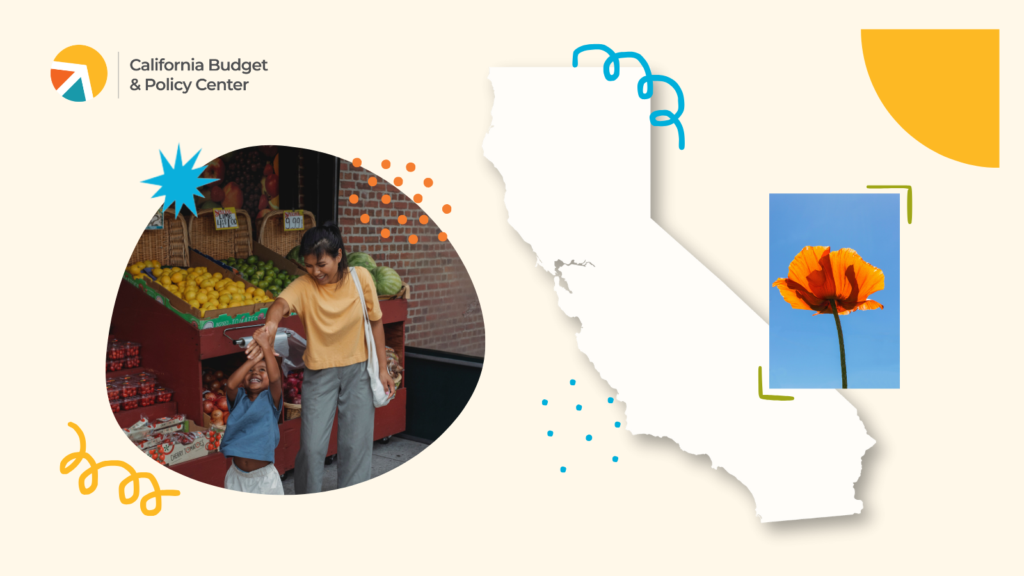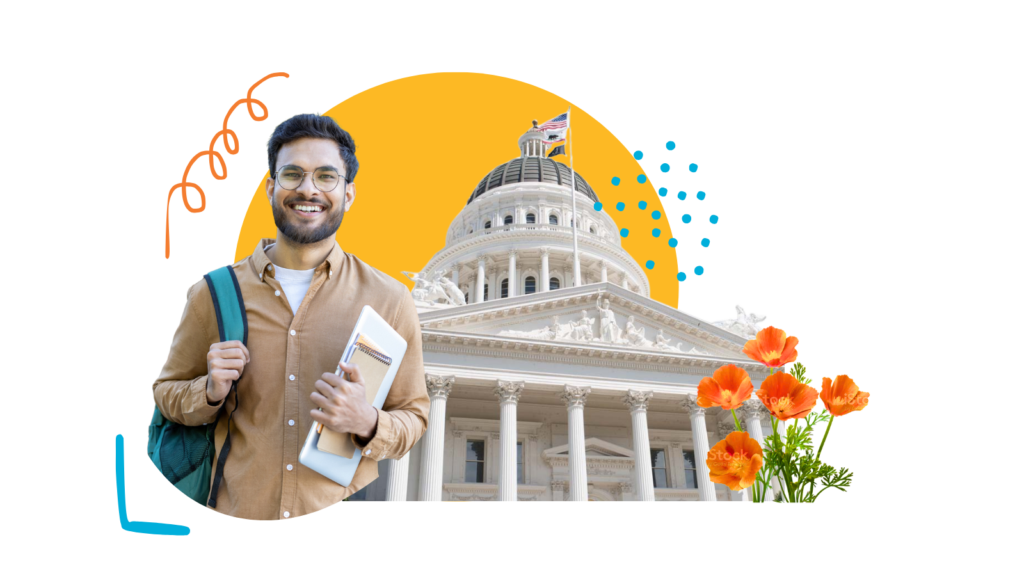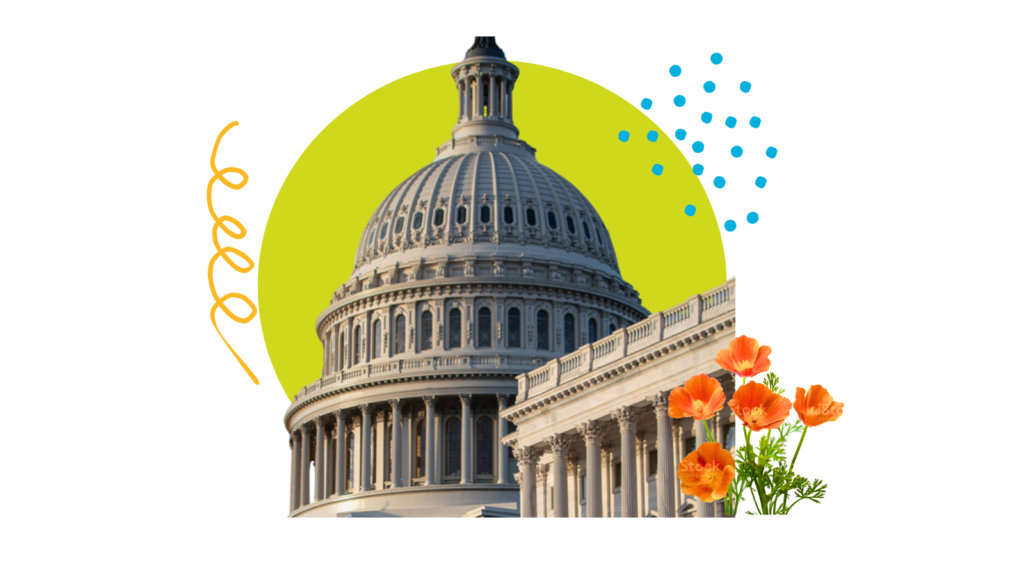Read this publication in English.
El proceso legislativo: Principios básicos
El proceso legislativo, también conocido como el proceso de proyectos de ley, proporciona una vía clave para que los californianos que desean cambiar la ley estatal puedan hacerlo a través de la legislatura del estado.
Cada año, los miembros de la asamblea legislativa y el senado presentan conjuntamente miles de proyectos de ley que avanzan a través del proceso legislativo parcial o totalmente. Estos proyectos proponen cambios a uno o más de los casi 30 códigos estatales de California y estos cambios entran en vigencia solo si el proyecto de ley es aprobado por ambas cámaras y firmado por el gobernador.
Las propuestas de modificar la Constitución del estado también pasan por el proceso legislativo. Aunque las modificaciones constitucionales de la asamblea legislativa y el senado no requieren la firma del gobernador, sí necesitan la aprobación de los votantes para poder entrar en vigencia.
El proceso legislativo funciona de acuerdo a normas delineadas en la Constitución del estado, las leyes estatales y los acuerdos de ambas cámaras (“normas conjuntas”) adoptados por la asamblea legislativa y el senado al inicio de cada sesión legislativa de dos años.
Las normas escritas y no escritas exclusivas de cada cámara, así como de diversos comités dentro de cada cámara y que cambian de un año a otro, también moldean el proceso legislativo y las participaciones de participación del público.
Es importante resaltar que el proceso del presupuesto estatal ofrece una vía separada para cambiar la ley estatal a través de la legislatura (usando proyectos de ley “tráiler”). Comparado con el proceso legislativo, el proceso de presupuesto estatal tiene normas, plazos y, en algunos casos, encargados de tomar decisiones distintos. Quienes abogan por el cambio legislativo usan tanto el proceso de presupuesto estatal como el legislativo para impulsar sus metas políticas. Sin embargo, el resto de esta guía se concentra exclusivamente en el proceso legislativo.
Oportunidades para la participación del público en el proceso legislativo
El público tiene muchas oportunidades de interactuar con los legisladores estatales durante el proceso legislativo. Por ejemplo, las personas pueden:
- Sugerir ideas de proyectos de ley a los miembros de la legislatura.
- Desarrollar / renovar relaciones con los legisladores y su personal para desarrollar familiaridad y confianza, elementos cruciales para obtener autores de proyectos de ley e impulsar la legislación.
- Conocer a los legisladores y a su personal, así como miembros del gobierno del gobernador para defender legislación y abordar cualquier inquietud.
- Escribir cartas a los comités y a legisladores individuales para compartir opiniones sobre los proyectos de ley que se han presentado.
- Asistir a audiencias de comités legislativos para compartir opiniones sobre los proyectos de ley durante los períodos de comentario público.
- Instar al gobernador a que firme o vete una ley.
Comités de política
Los miembros de comités de políticas de la asamblea de legisladores y el senado consideran las consecuencias políticas de un proyecto de ley. El liderazgo de cada cámara asigna los proyectos de ley a comités de política según el tema de los proyectos y otros factores. Los proyectos de ley pueden ser revisados por un solo comité de política en cada cámara o por varios comités de política.
El senado estatal tiene más de 20 comités de política actuales, y la asamblea tiene más de 30. El Comité de Educación de la asamblea legislativa (Assembly Education Committee) y el Comité de Ingresos e Impuestos del senado son algunos ejemplos. Los proyectos de ley que se aprueban en esta etapa, potencialmente con modificaciones, se transfieren al comité de apropiaciones para revisarse en más profundidad.
Los comités de asignaciones y el “archivo de asuntos pendientes”
Los comités de asignaciones calculan el costo de los proyectos de ley. Si el costo alcanza o supera ciertos umbrales, en general el proyecto se coloca en el archivo de asuntos pendientes del comité, que esencialmente es una “sala de espera” para los proyectos que se examinan en mayor profundidad. Los umbrales de costo son relativamente bajos en ambas cámaras. En el senado, el umbral varía entre $50,000 y $150,000, depende del fondo estatal del que se tomará el dinero. El umbral en la asamblea legislativa es $150,000, sin importar cuál sea el fondo.
Dos veces por año, los comités de apropiaciones organizan audiencias donde anuncian rápidamente el destino de cientos de proyectos de ley que se encuentran en su archivo de asuntos pendientes. Los proyectos que se sacan del archivo de asuntos pendientes mediante un voto, frecuentemente con enmiendas, pasan a la asamblea legislativa o el senado. Los proyectos de ley que continúan “en suspenso” en el comité de apropiaciones quedan inactivas por el resto del año.
Los proyectos de ley pueden quedar en suspenso por una variedad de razones, inclusive preocupaciones por su costo. Sin embargo, típicamente los directores de los comités no explican públicamente por qué algunos proyectos pasan a la asamblea legislativa o el senado y otros se mantienen en suspenso.
Una vez que un proyecto de ley es aprobado por el comité final en su “cámara de origen”, se programa para debatirse y votar en el pleno de la cámara. La mayoría de los proyectos de ley solo necesitan una mayoría simple para ser aprobados: 41 votos en la asamblea legislativa de 80 miembros y 21 votos en el senado de 40 miembros.
Sin embargo, se requieren dos tercios (una súper mayoría) de los votos en cada cámara si el proyecto de ley:
- Genera un impuesto nuevo o aumenta un impuesto existente.
- Contiene una cláusula de “urgencia” que le permite entrar en vigencia de inmediato en lugar de esperar hasta el 1 de enero (la fecha típica).
- Propone enmendar la Constitución del estado, un cambio que en última instancia debe ser aprobado por una mayoría de los votantes en una elección estatal.
Enjuagar y repetir: El proceso se traslada al senado estatal
Si un proyecto de ley es aprobado en la primera cámara, pasa a la cámara alta, donde se repite el proceso: comités de política, comité de apropiaciones, voto de la cámara en pleno. Típicamente los proyectos de ley son modificados una vez más en esta etapa. Si se aprueban con enmiendas, el proyecto vuelve a la cámara baja para una votación de “conformidad”. Los proyectos de ley aprobados con un voto de conformidad pasan al gobernador para su consideración final.
Aprobación o veto: Los proyectos de ley aprobados se envían al gobernador.
Una vez que un proyecto de ley recibe la aprobación legislativa final, se le envía al gobernador, quien puede:
- Firmar el proyecto de ley para que se convierta en ley.
- Permitir que el proyecto de ley se convierta en ley sin una firma.
- Vetar, rechazar, el proyecto de ley. La legislatura puede anular un veto con dos tercios de los votos en cada cámara. Sin embargo, la anulación de vetos es extremadamente infrecuente.
Típicamente, los proyectos de ley aprobados por mayoría simple entran en vigencia el 1 de enero del año calendario siguiente. Los estatutos urgentes, aumentos de impuestos y otros proyectos de ley específicos entran en vigencia en cuanto se convierten en ley.

















